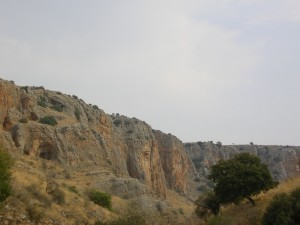Since I heard read about the National Writing Project in the United States (while studying for my Masters), I have been inspired by the philosophy of the project, the way it is organized and the way teachers respond to its activities. I have often daydreamed about flying to the States to take part in a three week summer workshop and then attempting to reproduce the experience here in Israel.
When I finally read this article by Locke, Whitehead, Dix and Cawkwell (2011) my daydream came to life again. Throughout the reading I found many connections with my own study. I will jot down some of those thoughts here.
I did not know that there was an attempt in NZ in the 1980s to create a NZ Writing Project. The idea certainly did suit the NZ literacy scene of that decade. After the project ceased to function in NZ years ago, the researchers recently revived the idea and created a six-day non-residential workshop for teachers, based on the NWP model.
As I read the article I asked myself: Does this mean that my study is irrelevant? That all has been done before? The answer is, of course, quite the contrary. I believe this study is another anchor to hold on to, another sign that what I am doing is important. Somewhere else in the world, with a different group of teachers, others are using similar principles of professional learning to reach out to educators with their unique professional needs.
Here the authors are emphasizing the NZ context. I should look closely at how they do that so that I can think hard about how to emphasize the Israeli context in my own thesis and publications. In the past I have heard this stressed in feedback on my work.
The article is of course relevant in that it is another example of practitioner research in the field of teacher learning and teacher education. There certainly are many of these articles being published in respected journals. The authors write:
“These objectives had given rise to a series of research questions, which are currently being investigated via a series of methodological lenses: ethnographic, case study, critical discourse analysis and self-study, but reflecting overall an action research ethos” (p. 277).
I am interested in the way they have chosen the phrase “action research ethos”? This approach encourages me to return to the way I am trying to envision my work as practitioner research within a narrative framework. As I read this article I don’t see the need to choose one approach over the other.
I believe the authors (as a group or individually) will publish additional articles on this interesting project. Here they chose to examine two of the many research questions arising from the study. This is also a structural feature of the article that I should examine. The authors describe the study as a whole and then zoom in close in order to present material relevant to two research questions and then zoom out again.
Additional thoughts:
I should inquire into the intensity of a 6 day workshop rather than a ‘once a fortnight’ session.
How do you say “writers workshop” in Hebrew? “Sadnat Ktiva” – סדנת כתיבה really doesn’t say it all for me.
Could I set up one course as a workshop based on the NWP principles?
Do I have to be an expert writer to run a workshop like that? Why does this question arise when I am thinking about a NWP style workshop? It doesn’t occur to me when I am planning and implementing my own courses here.
Could a workshop like this be a follow up to my courses? Stage 2 maybe? Could I do it in the summer? It is possible – but the only time unit possible today in Israel is 30 hours.
The mix of primary and secondary school teachers from several subject areas is an interesting aspect. The article seems to indicate that this has positive potential, but would be better in a longer workshop.
And finally… I must find a way to participate in a writing project workshop – maybe in NZ…
Thanks to SB who sent me the article!
Locke, T., Whitehead, D., Dix, S., & Cawkwell, G. (2011). New Zealand teachers respond to the ‘National Writing Project’ experience. Teacher Development, 15(3), 273-291.





